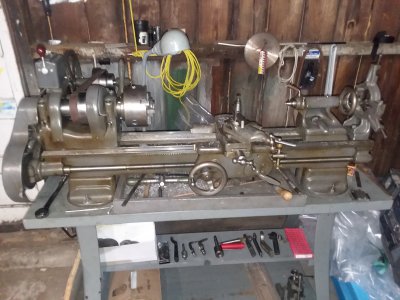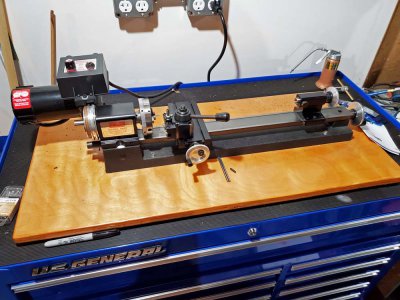- Joined
- Nov 16, 2020
- Messages
- 32
I am considering purchasing a Sherline mini lathe. I have seen many recommendations that these should be bolted to a solid table. Any suggestions as to what a solid table is? Should I purchase a flat metal pre-made surface, and weld it into a table? Should I just get a solid metal plate and bolt the lathe to the plate and the plate to a wooden table?



